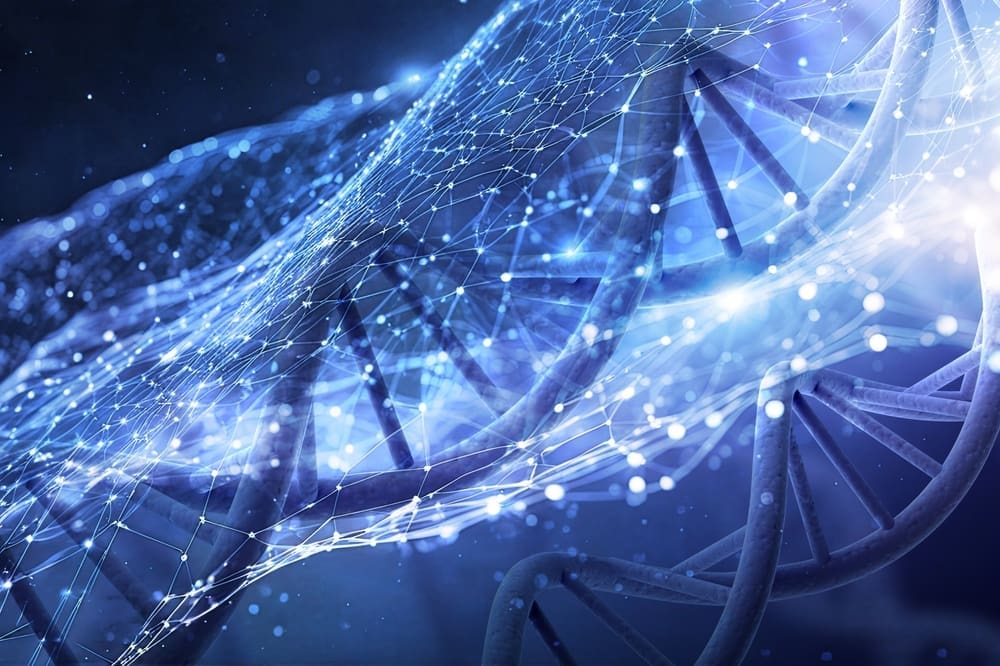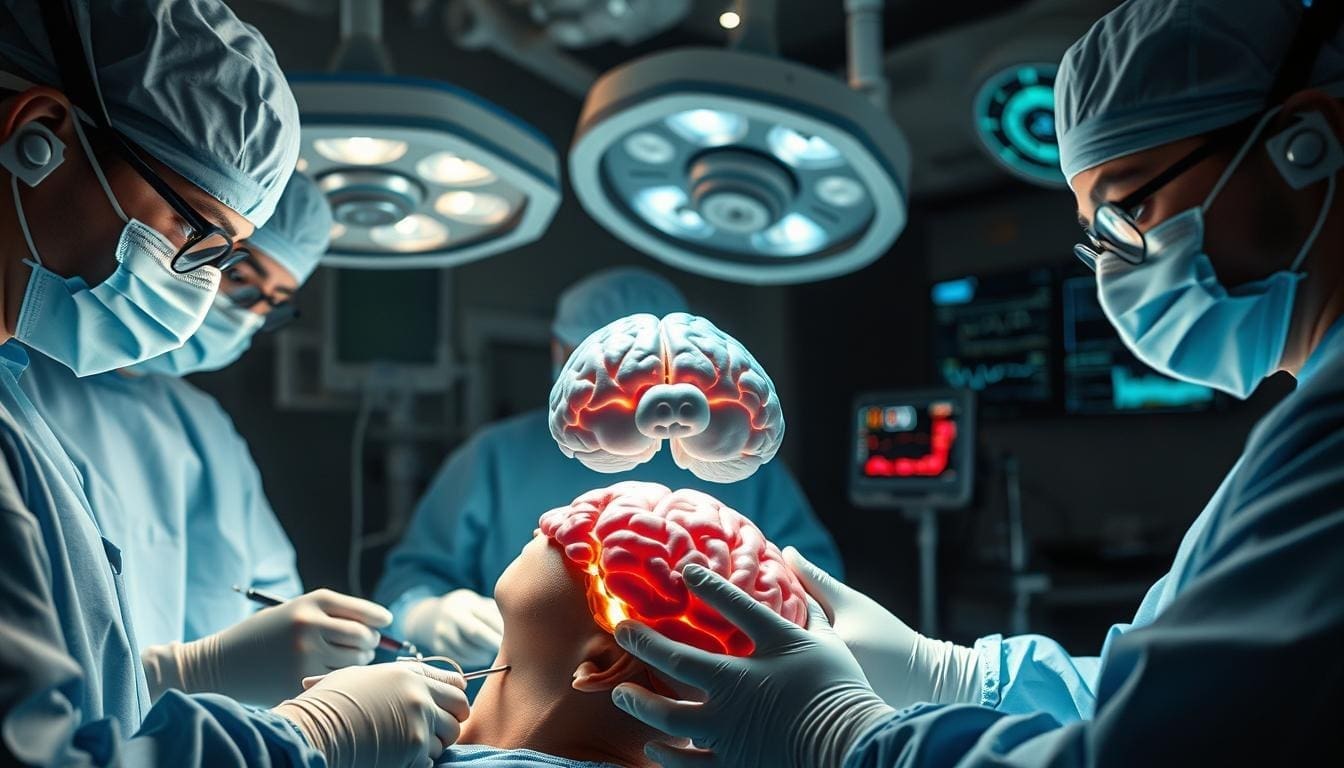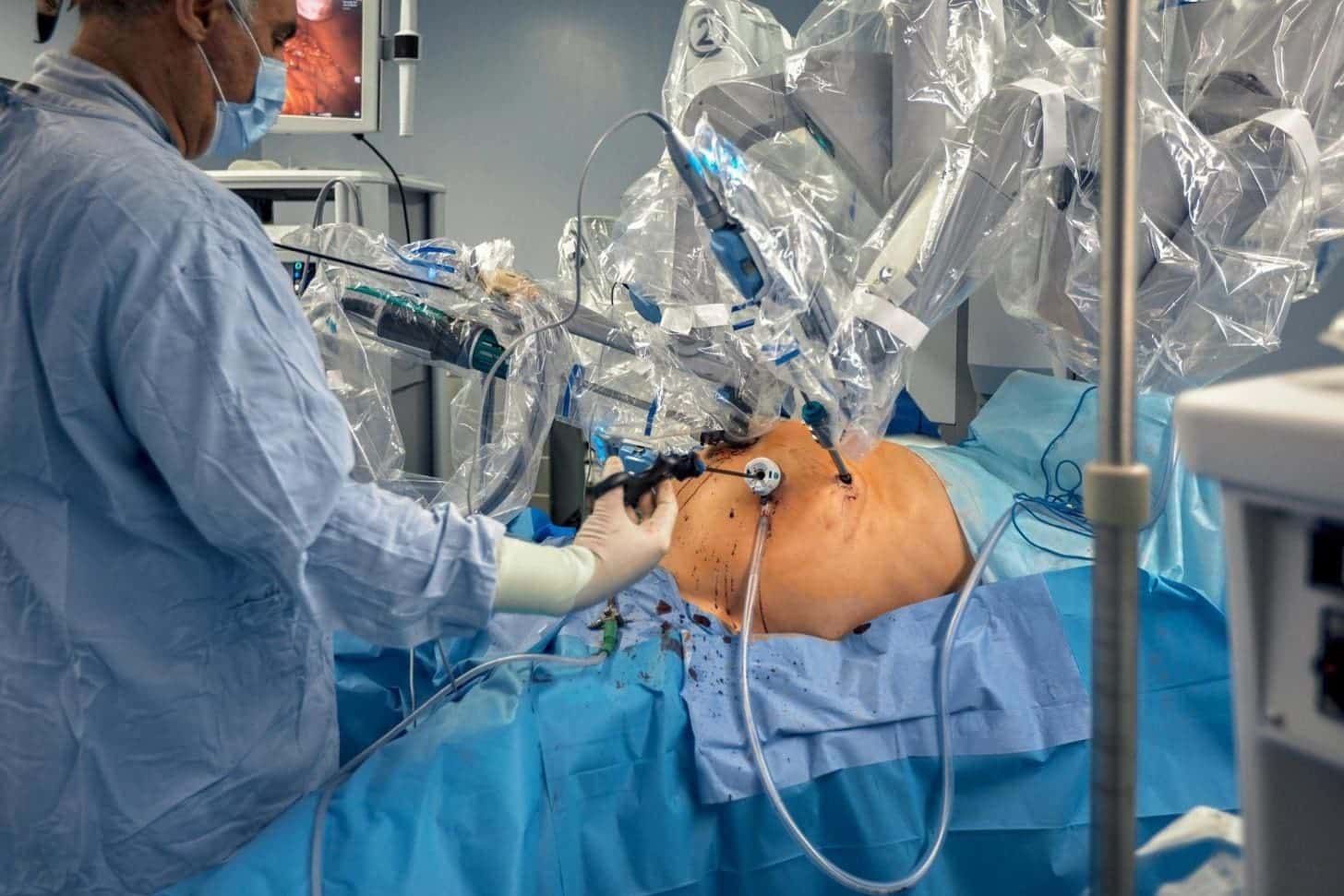Last Updated on November 26, 2025 by Shahmeer
The human body can heal itself thanks to stem cells. These cells can turn into different types, helping keep tissues healthy. This is key for our body’s function.
Scientists are looking into waking up stem cells again. They want to use them to fix damaged tissues and organs. This could lead to new ways to treat diseases.
This article will explore how to activate stem cells. We’ll look at the science behind it and how stem cell activators work.
Key Takeaways
- Understanding the role of stem cells in regenerative medicine
- The stem cell activators for tissue repair
- Exploring the biology behind stem cell activation
- The role of stem cell activators in medical treatments
- Future prospects for stem cell-based therapies
The Remarkable Potential of Stem Cells

Stem cells have the amazing ability to grow and fix tissues. They are special cells that can turn into different types of cells. This makes them like an internal fix-it team. Stem cells in the brain are key in fixing brain damage.
What Are Stem Cells and Why Are They Important?
Stem cells are cells that can change into other types of cells. They help fix and grow tissues. They are important for keeping the body healthy and fixing injuries.
“Stem cells are the body’s raw materials, capable of differentiating into specialized cells with specific functions,” highlighting their significance in medical research and treatment.
The Concept of Stem Cell Dormancy
Stem cell dormancy is when stem cells are not growing or changing. This helps keep the stem cell pool safe from getting too small. Learning about stem cell dormancy is key to finding new ways to help them work again.
This idea is very important for neuro stem cell groups. If we can wake them up, it could help fix brain damage.
The Biology of Dormant Stem Cells
Understanding dormant stem cells is key to their use in medicine. These cells can replace or repair damaged tissues, like in the brain. They are in a state where they’re not dividing but ready to start when needed.
Cellular Mechanisms of Dormancy
Stem cell dormancy is controlled by complex molecular signals. These signals can keep cells dormant or start them dividing and changing. For example, the Notch signaling pathway helps keep stem cells in a dormant state. On the other hand, the Wnt/β-catenin pathway encourages them to start growing and changing.
A leading researcher once said,
“The balance between dormancy and activation is critical for tissue homeostasis and regeneration.”
This balance is kept by many cellular and molecular processes working together.
Natural Activation and Deactivation Cycles
Dormant stem cells can start working when tissues get damaged or need to be replaced. For instance, neural stem cells in the brain can make new neurons. This is important for learning and memory. Knowing how these cycles work can help us use dormant stem cells for healing.
It’s also important to know how to stop stem cells from working too much. This prevents them from getting too tired. Studies show that things like exercise and diet can affect these cycles. This means we might be able to improve stem cell function through our lifestyle choices.
Types of Stem Cells in the Human Body
Learning about the different stem cells is key for medical progress. It helps in finding new ways to fix damaged brains and activate stem cells. This is thanks to stem cells brain repair and stem cell activators.
Embryonic vs. Adult Stem Cells
Stem cells are mainly two types: embryonic and adult. Embryonic stem cells come from embryos and can turn into any cell. They are very useful for research. Adult stem cells, found in grown-up bodies, can’t change into as many types of cells. Yet, they are important for fixing and keeping tissues healthy.
Tissue-Specific Stem Cells
Tissue-specific stem cells live in certain tissues and help fix and grow them. They are key for keeping tissues in balance. Scientists study them for regenerative medicine, like fixing the brain.
Induced Pluripotent Stem Cells
Induced pluripotent stem cells (iPSCs) are made from adult cells that can change into many cell types. They are like embryonic stem cells but come from grown-ups. iPSCs are a big hope for personalized medicine. They could lead to new ways to fix damaged tissues and brains.
The variety of stem cell types highlights the complexity and promise of stem cell science for future medical treatments.
Stem Cells in the Brain: Understanding Neural Regeneration
Learning about stem cells in the brain is vital for new ways to fix damaged brain areas. The brain has special neuro stem cells. These cells help the brain change, learn, and heal from injuries.
Neuro Stem Cell Functions and Locations
Neuro stem cells live in two main areas of the adult brain: the subventricular zone (SVZ) and the hippocampal dentate gyrus. They can turn into different types of brain cells. This helps fix and keep the brain working right. The SVZ makes new neurons for smell, and the hippocampus is key for memory and learning.
The brain’s ability to grow back shows its power to heal and change. Studying stem cells in the brain could help treat brain diseases and injuries.
Neurogenesis and Brain Plasticity
Neurogenesis is when new brain cells are made. It’s key for the brain to change and learn. Neuro stem cells are important in this process. They help the brain adapt and grow throughout life.
Figuring out how to use neuro stem cells could lead to new treatments. This could help with many brain problems, not just diseases but also injuries.
Why Do Stem Cells Become Dormant?
It’s important to understand why stem cells go dormant. This state means they stop growing and wait for signals to start again. Many things can cause this, like aging, disease, and stress.
Aging and Stem Cell Exhaustion
As we get older, our stem cells change and can get tired. This makes them less able to fix damaged tissues. Researchers are looking into stem cell activators to help these cells work better.
| Factor | Effect on Stem Cells | Potential Intervention |
| Aging | Stem cell exhaustion, reduced regeneration | Stem cell activators |
| Disease | Disrupted stem cell function, dormancy | Disease-specific treatments |
| Environmental Stressors | Epigenetic changes, altered stem cell behavior | Lifestyle modifications, protective measures |
Disease and Environmental Factors
Diseases and environmental stressors can also make stem cells dormant. Some diseases mess with how stem cells work. Toxins and radiation can change how stem cells behave. Finding ways to treat this, like ADHD stem cell treatment, is key.
Understanding how these factors affect stem cells is complex. More research is needed to figure out how to help.
How to Activate Stem Cells Naturally
Many people want to wake up dormant stem cells. They look for natural ways to do this. It’s important for keeping tissues healthy and helping the body fix itself.
Dietary Approaches
Eating a balanced diet is key for stem cell health. Foods full of antioxidants, like berries and greens, fight off damage. Omega-3 fatty acids in salmon also help cells stay healthy.
Exercise and Physical Activity
Exercise is great for waking up stem cells. It makes the body release growth factors that help stem cells grow. Running, swimming, and weight training are good for muscle and bone health.
Sleep and Stress Management
Good sleep and managing stress are vital for stem cells. Lack of sleep and stress can wear them out. Meditation, yoga, and enough sleep can help keep stem cells active.
Adding these natural steps to your life can boost stem cell health. It’s about living in a way that helps your body fix itself.
Stem Cell Activator Compounds and Medications
Scientists are looking into different ways to wake up dormant stem cells. They are studying many compounds and medicines. These might help fix damaged tissues and grow new ones.
Some studies show that certain medicines can turn on stem cells. Growth factors are proteins that help cells grow. Small molecule compounds can also change how cells work, helping stem cells to activate.
Current FDA-Approved Treatments
Even though there aren’t many FDA-approved treatments for stem cell activation, some medicines look promising. G-CSF (Granulocyte-Colony Stimulating Factor) helps make more stem cells in the bone marrow. Some statins, which are used to lower cholesterol, might also wake up stem cells.
| Treatment | Mechanism | Potential Application |
| G-CSF | Stimulates stem cell production in bone marrow | Tissue repair, regeneration |
| Statins | May enhance stem cell activation | Cardiovascular health, tissue repair |
Experimental Drugs and Compounds
Researchers are also testing new drugs and compounds to wake up stem cells. They include small molecule inhibitors and bioactive molecules from nature.
The search for stem cell activators is growing fast, with big hopes for regenerative medicine. More research on approved treatments and new drugs is needed. This will help us use stem cell activation to heal and grow tissues.
Stem Cell Activators: Scientific Evidence and Misconceptions
Stem cells are getting more attention, and it’s key to know the real from the fake. New research is helping us understand how to wake up stem cells for healing. This could lead to new treatments for many diseases.
Evidence-Based Activators
Studies have found some things that really work to turn on stem cells. For example, some chemicals and small molecules can make stem cells work better. Evidence-based activators are important for fixing damaged tissues, like in the brain.
- Growth factors that stimulate stem cell proliferation
- Small molecules that modulate signaling pathways
- Exercise and physical activity, which have been shown to promote neural stem cell activity
These tools could help treat many diseases and injuries. The study of neural stem cells brain repair is very promising. It might help with Alzheimer’s and Parkinson’s disease.
Debunking Myths and Pseudoscience
But, there’s a lot of false information out there too. Many products claim to activate stem cells without proof. It’s important to be careful and only believe in real science.
“The hype surrounding stem cell therapies often overshadows the rigorous scientific research needed to validate their safety and efficacy.” –
A leading stem cell researcher
Some clinics say they can treat ADHD with stem cells, but there’s no solid evidence. The idea is interesting, but it’s not proven yet. Also, claims about supplements or lifestyle changes activating stem cells are often not supported by science.
In short, there are real efforts to find stem cell activators, but we need to be careful. We should understand both the good and the bad of current research.
Restoring Brain Cells: The Frontier of Neural Regeneration
Stem cell therapy is being studied to restore brain cells. It could help treat many neurological conditions. Scientists are looking into how stem cells can fix or replace damaged brain areas.
Current Research on Neural Stem Cells Brain Repair
Researchers are studying how neural stem cells help repair the brain. They found that these cells can turn into different types of brain cells. This could mean replacing damaged cells.
Studies show that these cells can move to injured areas and help fix the tissue. The process of how these cells work is complex. It involves many signals and pathways.
Scientists are trying to understand these mechanisms better. They want to create effective treatments. Some key areas they’re looking into include:
- The role of growth factors in promoting neural stem cell proliferation and differentiation
- The impact of environmental factors, such as exercise and diet, on neural stem cell function
- The development of techniques to isolate and expand neural stem cells for therapeutic use
Potential Applications for Neurodegenerative Diseases
Neural stem cell therapy could help many neurodegenerative diseases. Conditions like Parkinson’s, Alzheimer’s, and multiple sclerosis might be treated. For example, studies suggest that transplanting these cells can improve motor skills in Parkinson’s disease models.
Despite challenges, the research is showing promise. More studies are needed to unlock the full power of stem cell therapy for these diseases.
Stem Cells Brain Repair: Therapeutic Applications
Stem cells hold great promise for brain repair, from stroke recovery to fighting neurodegenerative diseases. Neural stem cells can turn into different brain cell types. This makes them a hopeful solution for fixing damaged brain areas.
Stroke Recovery and Traumatic Brain Injury
Stem cell therapy is being looked into for stroke and traumatic brain injury recovery. Studies show it might help by boosting blood vessel and neuron growth. This could lead to better outcomes for those affected.
Alzheimer’s and Parkinson’s Disease
For diseases like Alzheimer’s and Parkinson’s, stem cell therapy aims to replace lost cells. For example, it could use neural stem cells to replace dopamine-making neurons in Parkinson’s. This offers a new way to treat the disease.
Multiple Sclerosis and Other Neurological Conditions
Stem cell therapy is also being studied for multiple sclerosis. The goal is to fix the myelin sheath damage in MS, which could slow or stop disease progression. Other conditions, like Huntington’s disease and ALS, are also being explored for stem cell treatment.
| Condition | Potential Stem Cell Application | Current Research Status |
| Stroke | Promoting angiogenesis and neurogenesis | Preclinical and early clinical trials |
| Alzheimer’s Disease | Replacing damaged neurons | Preclinical studies |
| Parkinson’s Disease | Replacing dopamine-producing neurons | Early clinical trials |
| Multiple Sclerosis | Repairing myelin sheath | Preclinical and clinical trials |
The table above shows the possible uses of stem cell therapy in various neurological conditions. It also highlights the current research progress in these fields.
ADHD Stem Cell Treatment: Research and Possibilities
Stem cell therapy is seen as a new hope for ADHD. It uses stem cells to fix or replace damaged brain parts. This could help improve ADHD symptoms.
Current Studies on ADHD and Neural Stem Cells
Research is exploring how neural stem cells can treat ADHD. It shows that stem cell activators might boost the brain’s repair work. This could lead to better thinking and fewer ADHD symptoms.
A study in a top scientific journal found that some stem cell activators help create new brain cells. This was in animals with ADHD-like issues.
Ethical and Practical Considerations
Stem cell therapy for ADHD looks promising but raises many questions. We need to make sure it’s safe and works well. We also have to deal with the rules around stem cell research and treatment.
There’s worry about who will get to use these treatments. They might be expensive and need special care.
The use of stem cell activators is a new idea. It could help with ADHD symptoms by fixing the brain’s repair work. This could be a fresh way to manage ADHD.
Challenges in Stem Cell Activation Research
The journey to activate stem cells is filled with hurdles. These include technical, biological, and regulatory obstacles. Despite the promise of treating many diseases, these challenges must be overcome.
Technical and Biological Barriers
Understanding the complex biology of stem cells is a major challenge. Developing ways to activate stem cells safely is also a technical hurdle. This includes avoiding the risk of tumors.
Biologically, it’s about how stem cells interact with their surroundings. It’s also about controlling them to get the desired results.
Researchers are tackling these issues with new technologies and improved methods. For example, genetic engineering and biomaterials are helping to shape stem cell behavior.
Regulatory and Ethical Issues
Stem cell research faces not just technical and biological hurdles but also regulatory and ethical ones. Laws vary worldwide, and uniform guidelines are needed for safety and effectiveness. Ethical concerns include the source of stem cells and misuse fears.
It’s vital to address these issues to progress stem cells activator research. Collaboration between scientists, policymakers, and ethicists is necessary. They must create guidelines that balance innovation with safety and ethics.
By overcoming these challenges, scientists can unlock the therapeutic power of stem cells. This will help activate stem cells and enhance human health.
The Future of Stem Cell Brain Repair and Activation
New technologies are changing how we treat brain injuries. Scientists are finding new ways to use stem cells to fix brain problems. This could help with many neurological conditions.
Emerging Technologies and Approaches
Gene editing tools like CRISPR/Cas9 are making big strides. They let us make precise changes to stem cells. This makes them even better for healing the brain.
Also, new materials and ways to place stem cells in the brain are being developed. These help stem cells work better in the brain.
- Gene editing technologies for precise stem cell modification
- Biomaterials and scaffolding for enhanced stem cell delivery
- Advanced imaging techniques for monitoring stem cell activity
Personalized Stem Cell Medicine
The future of brain repair with stem cells is personalized. Using a patient’s own cells means treatments are safer and more effective. This is great for complex brain diseases.
Personalized stem cell medicine is all about:
- Induced pluripotent stem cells (iPSCs) from patient samples
- Treatment plans made just for each patient
- Custom medicine for brain issues
Conclusion: The Promise and Reality of Reactivating Dormant Stem Cells
Reactivating dormant stem cells is a big step forward for regenerative medicine and treating diseases. Studies show that fasting and then eating can make old stem cells work better. This helps them to grow new tissues.
Scientists are learning how to wake up these cells naturally. They use special helpers called stem cell activators. A study at Columbia University Medical Center found that fasting for 24 hours and then eating can make old stem cells act like new ones.
This research is exciting because it could lead to new treatments for heart disease, diabetes, and stroke. As scientists learn more about how to wake up stem cells, we get closer to using them to help people. For more on how fasting and eating can help old stem cells, check out the study by Columbia University Medical Center.
FAQ
How might personalized stem cell medicine impact the future of neurological treatment?
Personalized stem cell medicine could change how we treat brain diseases. It might make treatments more effective and targeted to each person’s needs.
Is there a link between ADHD and stem cell treatment?
New studies are looking into using stem cells for ADHD. They focus on how stem cells affect the brain and behavior. But, we need more research to know if it’s safe and effective.
What are the challenges in using stem cells for brain repair?
There are many hurdles, like making sure stem cells survive and work in the brain. There are also rules and ethics to follow in stem cell research and treatment.
Can stem cell activation help with neurodegenerative diseases like Alzheimer’s or Parkinson’s?
Scientists are looking into using stem cells to fight diseases like Alzheimer’s and Parkinson’s. But, more research is needed to see if it works well.
How do lifestyle factors such as sleep and stress management impact stem cell health?
Sleep and managing stress are key for stem cell health. Good sleep and stress control help stem cells work better.
Are there any FDA-approved treatments that activate stem cells?
Yes, the FDA has approved treatments that aim to wake up stem cells. But, what’s available and how it works can change based on the condition.
What is the role of stem cells in brain repair?
Stem cells, like neural stem cells, help fix the brain. They turn into new brain cells. This supports the brain’s ability to change and recover from injuries or diseases.
Can dormant stem cells be reactivated?
Yes, studies show dormant stem cells can wake up. This can happen through diet, exercise, and special compounds.
What are stem cells and how do they work in the brain?
Stem cells can turn into different types of cells. In the brain, they help keep it healthy and grow new cells. This is called neurogenesis.





